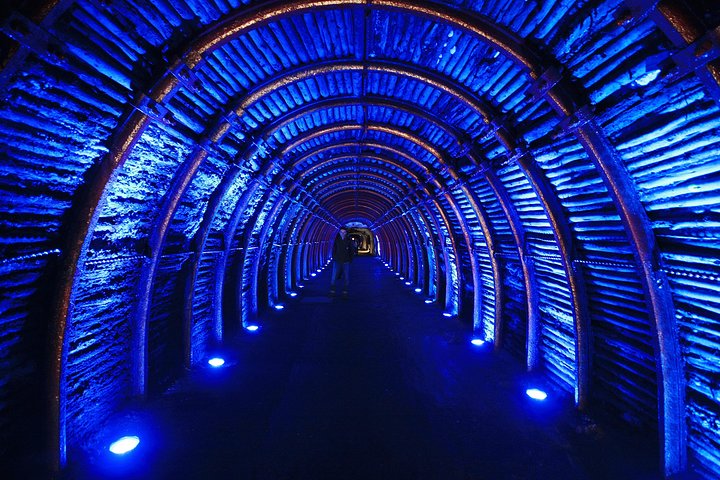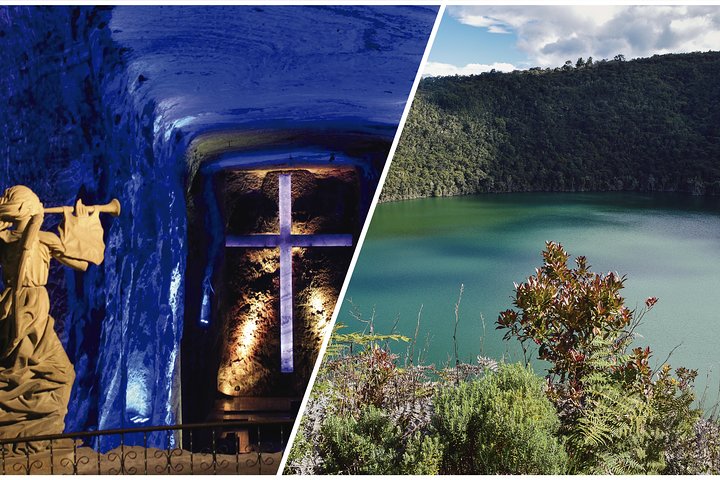Exploring the Sacred Wonders of Guatavita and Zipaquira
Drawn by the allure of ancient legends and architectural wonders, I embarked on a journey to Guatavita Lake and the Salt Cathedral. This adventure promised a profound exploration of nature, culture, and history, and it did not disappoint.
The Mystical Allure of Guatavita Lake
As I embarked on my journey to the enchanting Guatavita Lake, I was immediately captivated by the lush greenery and the serene atmosphere that enveloped the area. The lake, steeped in the legend of El Dorado, is a sacred site for the indigenous Muisca people. Our guide, a passionate storyteller, shared tales of the ancient rituals that once took place here, where gold offerings were made to the gods. The energy of the place was palpable, and I felt a deep connection to the land and its history.
The trek around the lake was a delightful exploration of the unique flora and fauna of the region. The transition from Andean cold weather vegetation to the Paramo ecosystem was fascinating, with the frailejón plants standing out with their thick, soft leaves. As a biologist, I was thrilled to observe the diverse plant life and the vibrant bird species that call this area home. The three viewpoints offered breathtaking vistas of the lake, each more stunning than the last.
After the invigorating hike, we indulged in traditional Muisca cuisine, savoring the flavors of corn cob and other local delicacies. The experience was a beautiful blend of nature, culture, and history, leaving me with a profound appreciation for the indigenous heritage of the region.
The Architectural Marvel of the Salt Cathedral
Our next destination was the awe-inspiring Salt Cathedral of Zipaquira, a testament to human ingenuity and artistic expression. Carved deep within the salt mines, this underground cathedral is a marvel of architecture and design. As I descended into the depths of the earth, I was struck by the sheer scale and beauty of the cathedral.
The intricate carvings in salt and sandstone, depicting the 14 stations of the cross, were a sight to behold. While the religious significance was not my primary focus, I couldn’t help but admire the craftsmanship and dedication that went into creating these masterpieces. The central cathedral, with its grand dome and striking art, was a highlight of the visit. The acoustics were remarkable, and I could only imagine the ethereal sound of a choir filling the space.
Our guide provided insightful commentary on the history and construction of the cathedral, highlighting the collaboration between miners and architects. The audio guide, however, was heavily focused on the religious aspects, which I found less engaging. Nevertheless, the experience was unforgettable, and the cathedral’s grandeur left a lasting impression.
Embracing the Cultural Richness of Guatavita Town
The final leg of our journey took us to the charming town of Guatavita, a place where colonial architecture meets vibrant local culture. Founded in 1967, the town is a hub of gastronomy, art, and handicrafts. Strolling through the cobblestone streets, I was enchanted by the blend of old-world charm and modern creativity.
We explored the bustling markets, where artisans showcased their handcrafted goods, from intricate jewelry to colorful textiles. The town’s culinary offerings were equally enticing, with a variety of traditional dishes to sample. I relished the opportunity to engage with the local community, learning about their customs and traditions.
This journey through Guatavita Lake and the Salt Cathedral was a profound exploration of the intersection between nature, art, and culture. It reinforced my commitment to preserving the rich heritage and natural beauty of Latin America, a mission that continues to inspire my work as a conservationist and travel writer. I encourage all who seek a deeper connection with the world to embark on this unforgettable adventure.

















































